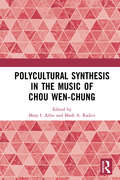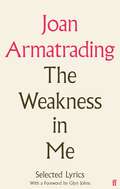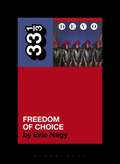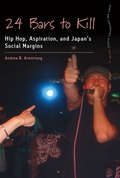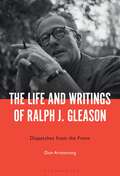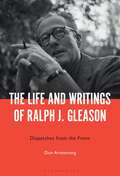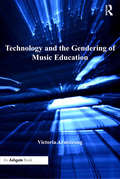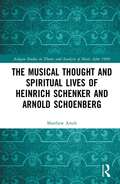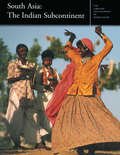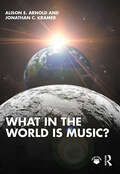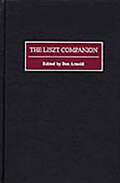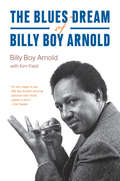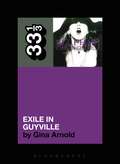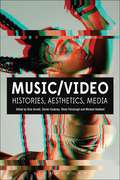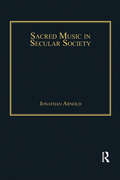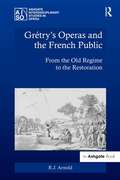- Table View
- List View
Polycultural Synthesis in the Music of Chou Wen-chung
by Mary Arlin Mark RadiceThe displacement of Chou Wen-chung from his native China in 1948 forced him into Western-European culture. Ultimately finding his vocation as a composer, he familiarized himself with classical and contemporary techniques but interpreted these through his traditionally oriented Chinese cultural perspective. The result has been the composition of a unique body of repertoire that synthesizes the most progressive Western compositional idioms with an astonishingly traditional heritage of Asian approaches, not only from music, but also from calligraphy, landscape painting, poetry, and more. Chou’s importance rests not only in his compositions, but also in his widespread influence through his extensive teaching career at Columbia University, where his many students included Bright Sheng, Zhou Long, Tan Dun, Chen Yi, Joan Tower, and many more. During his tenure at Columbia, he also founded the U.S.-China Arts Exchange, which continues to this day to be a vital stimulus for multicultural interaction. The volume will include an inventory of the Chou collection in the Paul Sacher Stiftung in Basel, Switzerland.
The Weakness in Me: The Selected Lyrics of Joan Armatrading
by Joan ArmatradingSince the release of her debut album Whatever's For Us in 1972, Joan Armatrading has, across a fifty-year career, traversed styles and genres to create a monumental body of work. Acknowledged as the first British female singer-songwriter to gain international success, her writing is alive with intelligence and empathy and paints the human experience with insight and emotion.Selected and arranged by the author, and featuring a foreword by revered record producer Glyn Johns, The Weakness In Me presents the lyrics of Armatrading for the first time in one unique volume. It also contains an introduction by Armatrading alongside annotations to a number of songs, giving a rare, personal glimpse into the creative process of a true pioneer.
Devo's Freedom of Choice (33 1/3)
by Fred Armisen Evie NagyFinally, after all that waiting, The Future arrived in 1980. Ohio art-rockers Devo had plainly prepared with their 1979 second LP Duty Now for the Future, and now it was go time. Propelled by the new decade's high-tech, free-market, pre-AIDS promise, 1980's Freedom of Choice would rocket what Devo co-founder Gerald Casale calls his "alternate universe, hermetically sealed, alien band" both into the arms of the Earthlings and back to their home planet in one scenic trip.Before an artistic and commercial decline that resulted in a 20-year gap between Devo's last two studio records, Freedom of Choice made them curious, insurgent superstars, vindicated but ultimately betrayed by the birth of MTV. Their only platinum album represented the best of their unreplicable code: dead-serious tricksters, embracing conformity in order to destroy it with bullet-proof pop sensibility. Through first-hand accounts from the band and musical analysis set against an examination of new wave's emergence, the first-ever authorized book about Devo (with a foreword by Portlandia's Fred Armisen) explores the group's peak of success, when their hermetic seal cracked open to let in mainstream attention, a legion of new Devotees, and plenty of misunderstandings. "Freedom of Choice was the end of Devo innocence–it turned out to be the high point before the s***storm of a total cultural move to the right, the advent of AIDS, and the press starting to figure Devo out and think they had our number," says Casale. "It's where everything changes."
Devo's Freedom of Choice (33 1/3)
by Fred Armisen Evie NagyFinally, after all that waiting, The Future arrived in 1980. Ohio art-rockers Devo had plainly prepared with their 1979 second LP Duty Now for the Future, and now it was go time. Propelled by the new decade's high-tech, free-market, pre-AIDS promise, 1980's Freedom of Choice would rocket what Devo co-founder Gerald Casale calls his "alternate universe, hermetically sealed, alien band" both into the arms of the Earthlings and back to their home planet in one scenic trip.Before an artistic and commercial decline that resulted in a 20-year gap between Devo's last two studio records, Freedom of Choice made them curious, insurgent superstars, vindicated but ultimately betrayed by the birth of MTV. Their only platinum album represented the best of their unreplicable code: dead-serious tricksters, embracing conformity in order to destroy it with bullet-proof pop sensibility. Through first-hand accounts from the band and musical analysis set against an examination of new wave's emergence, the first-ever authorized book about Devo (with a foreword by Portlandia's Fred Armisen) explores the group's peak of success, when their hermetic seal cracked open to let in mainstream attention, a legion of new Devotees, and plenty of misunderstandings. "Freedom of Choice was the end of Devo innocence–it turned out to be the high point before the s***storm of a total cultural move to the right, the advent of AIDS, and the press starting to figure Devo out and think they had our number," says Casale. "It's where everything changes."
24 Bars to Kill: Hip Hop, Aspiration, and Japan's Social Margins (Dance and Performance Studies #14)
by Andrew B. ArmstrongThe most clearly identifiable and popular form of Japanese hip-hop, “ghetto” or “gangsta” music has much in common with its corresponding American subgenres, including its portrayal of life on the margins, confrontational style, and aspirational “rags-to-riches” narratives. Contrary to depictions of an ethnically and economically homogeneous Japan, gangsta J-hop gives voice to the suffering, deprivation, and social exclusion experienced by many modern Japanese. 24 Bars to Kill offers a fascinating ethnographic account of this music as well as the subculture around it, showing how gangsta hip-hop arises from widespread dissatisfaction and malaise.
The Life and Writings of Ralph J. Gleason: Dispatches from the Front
by Professor. Don ArmstrongDiscover the enthralling world of Ralph J. Gleason, a pioneering music journalist who expanded the possibilities of the newspaper music column, sparked the San Francisco jazz and rock scenes, and co-founded Rolling Stone magazine. Gleason not only reported on but influenced the trajectory of popular music. He alone chronicled the unparalleled evolution of popular music from the 1930s into the 1970s, and while doing so, interviewed and befriended many trailblazers such as Miles Davis, Dizzy Gillespie, Bob Dylan, and the Beatles. A true iconoclast, he dismantled the barriers between popular and highbrow music, and barriers separating the musical genres. He played a crucial role in shaping postwar music criticism by covering all genres and analyzing music's social, political, and historical meanings. This book uncovers never-before-seen letters, anecdotes, family accounts, and exclusive interviews to reveal one of the most intriguing personalities of the 20th century.
The Life and Writings of Ralph J. Gleason: Dispatches from the Front
by Professor. Don ArmstrongDiscover the enthralling world of Ralph J. Gleason, a pioneering music journalist who expanded the possibilities of the newspaper music column, sparked the San Francisco jazz and rock scenes, and co-founded Rolling Stone magazine. Gleason not only reported on but influenced the trajectory of popular music. He alone chronicled the unparalleled evolution of popular music from the 1930s into the 1970s, and while doing so, interviewed and befriended many trailblazers such as Miles Davis, Dizzy Gillespie, Bob Dylan, and the Beatles. A true iconoclast, he dismantled the barriers between popular and highbrow music, and barriers separating the musical genres. He played a crucial role in shaping postwar music criticism by covering all genres and analyzing music's social, political, and historical meanings. This book uncovers never-before-seen letters, anecdotes, family accounts, and exclusive interviews to reveal one of the most intriguing personalities of the 20th century.
Technology and the Gendering of Music Education
by Victoria ArmstrongCritical of technologically determinist assumptions underpinning current educational policy, Victoria Armstrong argues that this growing technicism has grave implications for the music classroom where composition is often synonymous with the music technology suite. The use of computers and associated compositional software in music education is frequently decontextualized from cultural and social relationships, thereby ignoring the fact that new technologies are used and developed within existing social spaces that are always already delineated along gender lines. Armstrong suggests these gender-technology relations have a profound effect on the ways adolescents compose music as well as how gendered identities in the technologized music classroom are constructed. Drawing together perspectives from the sociology of science and technology studies (STS) and the sociology of music, Armstrong examines the gendered processes and practices that contribute to how students learn about technology, the repertoire of teacher and student talk, its effect on student confidence and the issue of male control of technological knowledge. Even though girls and female teachers have technological knowledge and skill, the continuing material and symbolic associations of technology with men and masculinity contribute to the perception of women as less able and less interested in all things technological. In light of the fact that music technology is now central to many music-making practices across all sectors of education from primary, secondary through to higher education, this book provides a timely critical analysis that powerfully demonstrates why the relationship between gender and music technology should remain an important empirical consideration.
Technology and the Gendering of Music Education
by Victoria ArmstrongCritical of technologically determinist assumptions underpinning current educational policy, Victoria Armstrong argues that this growing technicism has grave implications for the music classroom where composition is often synonymous with the music technology suite. The use of computers and associated compositional software in music education is frequently decontextualized from cultural and social relationships, thereby ignoring the fact that new technologies are used and developed within existing social spaces that are always already delineated along gender lines. Armstrong suggests these gender-technology relations have a profound effect on the ways adolescents compose music as well as how gendered identities in the technologized music classroom are constructed. Drawing together perspectives from the sociology of science and technology studies (STS) and the sociology of music, Armstrong examines the gendered processes and practices that contribute to how students learn about technology, the repertoire of teacher and student talk, its effect on student confidence and the issue of male control of technological knowledge. Even though girls and female teachers have technological knowledge and skill, the continuing material and symbolic associations of technology with men and masculinity contribute to the perception of women as less able and less interested in all things technological. In light of the fact that music technology is now central to many music-making practices across all sectors of education from primary, secondary through to higher education, this book provides a timely critical analysis that powerfully demonstrates why the relationship between gender and music technology should remain an important empirical consideration.
The Musical Thought and Spiritual Lives of Heinrich Schenker and Arnold Schoenberg (Ashgate Studies in Theory and Analysis of Music After 1900)
by Matthew ArndtThis book examines the origin, content, and development of the musical thought of Heinrich Schenker and Arnold Schoenberg. One of the premises is that Schenker’s and Schoenberg’s inner musical lives are inseparable from their inner spiritual lives. Curiously, Schenker and Schoenberg start out in much the same musical-spiritual place, yet musically they split while spiritually they grow closer. The reception of Schenker’s and Schoenberg’s work has sidestepped this paradox of commonality and conflict, instead choosing to universalize and amplify their conflict. Bringing to light a trove of unpublished material, Arndt argues that Schenker’s and Schoenberg’s conflict is a reflection of tensions within their musical and spiritual ideas. They share a particular conception of the tone as an ideal sound realized in the spiritual eye of the genius. The tensions inherent in this largely psychological and material notion of the tone and this largely metaphysical notion of the genius shape both their musical divergence on the logical (technical) level in theory and composition, including their advocacy of the Ursatz versus twelvetone composition, and their spiritual convergence, including their embrace of Judaism. These findings shed new light on the musical and philosophical worlds of Schenker and Schoenberg and on the profound artistic and spiritual questions with which they grapple.
The Musical Thought and Spiritual Lives of Heinrich Schenker and Arnold Schoenberg (Ashgate Studies in Theory and Analysis of Music After 1900)
by Matthew ArndtThis book examines the origin, content, and development of the musical thought of Heinrich Schenker and Arnold Schoenberg. One of the premises is that Schenker’s and Schoenberg’s inner musical lives are inseparable from their inner spiritual lives. Curiously, Schenker and Schoenberg start out in much the same musical-spiritual place, yet musically they split while spiritually they grow closer. The reception of Schenker’s and Schoenberg’s work has sidestepped this paradox of commonality and conflict, instead choosing to universalize and amplify their conflict. Bringing to light a trove of unpublished material, Arndt argues that Schenker’s and Schoenberg’s conflict is a reflection of tensions within their musical and spiritual ideas. They share a particular conception of the tone as an ideal sound realized in the spiritual eye of the genius. The tensions inherent in this largely psychological and material notion of the tone and this largely metaphysical notion of the genius shape both their musical divergence on the logical (technical) level in theory and composition, including their advocacy of the Ursatz versus twelvetone composition, and their spiritual convergence, including their embrace of Judaism. These findings shed new light on the musical and philosophical worlds of Schenker and Schoenberg and on the profound artistic and spiritual questions with which they grapple.
The Garland Encyclopedia of World Music: South Asia: The Indian Subcontinent (Garland Encyclopedia of World Music)
by Alison ArnoldFirst published in 2000. Routledge is an imprint of Taylor & Francis, an informa company.
The Garland Encyclopedia of World Music: South Asia: The Indian Subcontinent (Garland Encyclopedia of World Music)
by Alison ArnoldFirst published in 2000. Routledge is an imprint of Taylor & Francis, an informa company.
What in the World is Music?
by Alison E. Arnold Jonathan C. KramerWhat in the World is Music? Second Edition is an undergraduate, interactive e-textbook that explores the shared ways people engage with music and how humans organize and experience sound. It adopts a global approach, featuring more than 300 streaming videos and 50 streaming audio tracks of music from around the world. Drawing from both musicological and ethnomusicological modes of inquiry, the authors explain the nature and meaning of music as a universal human practice, making no distinction between Western and non-Western repertoires while providing students with strong points of connection to the ways it affects their own lives. The What in the World is Music? curriculum is divided into five parts, with a fully integrated multimedia program linked directly to the chapters: The Foundations of Music I proposes a working definition of "music" and considers inquiry-guided approaches to its study: Why do humans have innate musical perception? How does this ability manifest itself in the human voice? A catalog of musical instruments showcases global diversity and human ingenuity. The Foundations of Music II continues the inquiry-guided approach, recognizing the principles by which musical sound is organized while discussing elements such as rhythm, melody, harmony, texture, form, genre, and style. Where did music come from? What is it for? Music and Identity examines how music operates in shaping, negotiating, and expressing human identity and is organized around three broad conceptual frames: the group, hybridity, and conflict. Music and the Sacred addresses how music is used in religious practices throughout the world: chanting sacred texts and singing devotional verses, inspiring religious experience such as ecstasy and trance, and marking and shaping ritual space and time. Music and Social Life analyzes the uses of music in storytelling, theater, and film. It delves into the contributions of sound technologies, while looking at the many ways music enhances nightlife, public ceremonies, and festivals.
What in the World is Music?
by Alison E. Arnold Jonathan C. KramerWhat in the World is Music? Second Edition is an undergraduate, interactive e-textbook that explores the shared ways people engage with music and how humans organize and experience sound. It adopts a global approach, featuring more than 300 streaming videos and 50 streaming audio tracks of music from around the world. Drawing from both musicological and ethnomusicological modes of inquiry, the authors explain the nature and meaning of music as a universal human practice, making no distinction between Western and non-Western repertoires while providing students with strong points of connection to the ways it affects their own lives. The What in the World is Music? curriculum is divided into five parts, with a fully integrated multimedia program linked directly to the chapters: The Foundations of Music I proposes a working definition of "music" and considers inquiry-guided approaches to its study: Why do humans have innate musical perception? How does this ability manifest itself in the human voice? A catalog of musical instruments showcases global diversity and human ingenuity. The Foundations of Music II continues the inquiry-guided approach, recognizing the principles by which musical sound is organized while discussing elements such as rhythm, melody, harmony, texture, form, genre, and style. Where did music come from? What is it for? Music and Identity examines how music operates in shaping, negotiating, and expressing human identity and is organized around three broad conceptual frames: the group, hybridity, and conflict. Music and the Sacred addresses how music is used in religious practices throughout the world: chanting sacred texts and singing devotional verses, inspiring religious experience such as ecstasy and trance, and marking and shaping ritual space and time. Music and Social Life analyzes the uses of music in storytelling, theater, and film. It delves into the contributions of sound technologies, while looking at the many ways music enhances nightlife, public ceremonies, and festivals.
The Liszt Companion (Non-ser.)
by Ben ArnoldFranz Liszt is most well-known for his compositions for piano and orchestra, but his influence is also strong in chamber music, choral music, and orchestral transcriptions. This new collection of essays presents a scholarly overview of all of the composer's work, providing the most comprehensive and current treatment of both his oeuvre and the immense amount of secondary literature written about it. Highly regarded critics and scholars write for both a general and academic audience, covering all of Liszt's major compositions as well as the neglected gems found among his choral and chamber works.Following an outline of the subject's life, The Liszt Companion goes on to detail Liszt's critical reception in the German press, his writings and letters, his piano and orchestral works, his neglected secular choral works, and his major organ compositions. Also explored here are his little-known chamber pieces and his songs. An exhaustive bibliography and index of works conclude the volume. This work will both elucidate aspects of Liszt's most famous work and revive interest in those pieces that deserve and require greater attention.
The Blues Dream of Billy Boy Arnold (Chicago Visions and Revisions)
by Billy Boy Arnold Kim FieldThe frank, funny, and unforgettable autobiography of a living legend of Chicago blues. Simply put, Billy Boy Arnold is one of the last men standing from the Chicago blues scene’s raucous heyday. What’s more, unlike most artists in this electrifying melting pot, who were Southern transplants, Arnold—a harmonica master who shared stages with Bo Diddley, Muddy Waters, and Howlin’ Wolf, plus a singer and hitmaker in his own right who first recorded the standards “I Wish You Would” and “I Ain’t Got You”—was born right here and has lived nowhere else. This makes his perspective on Chicago blues, its players, and its locales all the rarer and all the more valuable. Arnold has witnessed musical generations come and go, from the decline of prewar country blues to the birth of the electric blues and the worldwide spread of rock and roll. Working here in collaboration with writer and fellow musician Kim Field, he gets it all down. The Blues Dream of Billy Boy Arnold is a remarkably clear-eyed testament to more than eighty years of musical love and creation, from Arnold’s adolescent quest to locate the legendary Sonny Boy Williamson, the story of how he named Bo Diddley Bo Diddley, and the ups and downs of his seven-decade recording career. Arnold’s tale—candidly told with humor, insight, and grit—is one that no fan of modern American music can afford to miss.
The Blues Dream of Billy Boy Arnold (Chicago Visions and Revisions)
by Billy Boy Arnold Kim FieldThe frank, funny, and unforgettable autobiography of a living legend of Chicago blues. Simply put, Billy Boy Arnold is one of the last men standing from the Chicago blues scene’s raucous heyday. What’s more, unlike most artists in this electrifying melting pot, who were Southern transplants, Arnold—a harmonica master who shared stages with Bo Diddley, Muddy Waters, and Howlin’ Wolf, plus a singer and hitmaker in his own right who first recorded the standards “I Wish You Would” and “I Ain’t Got You”—was born right here and has lived nowhere else. This makes his perspective on Chicago blues, its players, and its locales all the rarer and all the more valuable. Arnold has witnessed musical generations come and go, from the decline of prewar country blues to the birth of the electric blues and the worldwide spread of rock and roll. Working here in collaboration with writer and fellow musician Kim Field, he gets it all down. The Blues Dream of Billy Boy Arnold is a remarkably clear-eyed testament to more than eighty years of musical love and creation, from Arnold’s adolescent quest to locate the legendary Sonny Boy Williamson, the story of how he named Bo Diddley Bo Diddley, and the ups and downs of his seven-decade recording career. Arnold’s tale—candidly told with humor, insight, and grit—is one that no fan of modern American music can afford to miss.
Liz Phair's Exile in Guyville (33 1/3)
by Gina ArnoldAlthough Exile in Guyville was celebrated as one of the year's top records by Spin and the New York Times, it was also, to some, an abomination: a mockery of the Rolling Stones' most revered record and a rare glimpse into the psyche of a shrewd, independent, strong young woman. For these crimes, Liz Phair was run out of her hometown of Chicago, enduring a flame war perpetrated by writers who accused her of being boring, inauthentic, and even a poor musician. With Exile in Guyville, Phair spoke for all the girls who loved the world of indie rock but felt deeply unwelcome there. Like all great works of art, Exile was a harbinger of the shape of things to come: Phair may have undermined the male ego, but she also unleashed a new female one. For the sake of all the female artists who have benefited from her work-from Sleater-Kinney to Lana Del Rey and back again-it's high time we go back to Guyville.
Liz Phair's Exile in Guyville (33 1/3)
by Gina ArnoldAlthough Exile in Guyville was celebrated as one of the year's top records by Spin and the New York Times, it was also, to some, an abomination: a mockery of the Rolling Stones' most revered record and a rare glimpse into the psyche of a shrewd, independent, strong young woman. For these crimes, Liz Phair was run out of her hometown of Chicago, enduring a flame war perpetrated by writers who accused her of being boring, inauthentic, and even a poor musician. With Exile in Guyville, Phair spoke for all the girls who loved the world of indie rock but felt deeply unwelcome there. Like all great works of art, Exile was a harbinger of the shape of things to come: Phair may have undermined the male ego, but she also unleashed a new female one. For the sake of all the female artists who have benefited from her work-from Sleater-Kinney to Lana Del Rey and back again-it's high time we go back to Guyville.
Music/Video: Histories, Aesthetics, Media
by Gina Arnold Daniel Cookney Dr Kirsty Fairclough Dr Michael GoddardThis book is a lively, comprehensive and timely reader on the music video, capitalising on cross-disciplinary research expertise, which represents a substantial academic engagement with the music video, a mediated form and practice that still remains relatively under-explored in a 21st century context. The music video has remained suspended between two distinct poles. On the one hand, the music video as the visual sheen of late capitalism, at the intersection of celebrity studies and postmodernism. On the other hand, the music video as art, looking to a prehistory of avant-garde film-making while perpetually pushing forward the digital frontier with a taste for anarchy, controversy, and the integration of special effects into a form designed to be disseminated across digital platforms. In this way, the music video virally re-engenders debates about high art and low culture. This collection presents a comprehensive account of the music video from a contemporary 21st century perspective. This entails revisiting key moments in the canonical history of the music video, exploring its articulations of sexuality and gender, examining its functioning as a form of artistic expression between music, film and video art, and following the music video's dissemination into the digital domain, considering how digital media and social media have come to re-invent the forms and functions of the music video, well beyond the limits of "music television†?.
Sacred Music in Secular Society
by Jonathan ArnoldIf music has ever given you 'a glimpse of something beyond the horizons of our materialism or our contemporary values' (James MacMillan), then you will find this book essential reading. Sacred Music in Secular Society is a new and challenging work asking why Christian sacred music is now appealing afresh to a wide and varied audience, both religious and secular. Jonathan Arnold offers unique insights as a professional singer of sacred music in liturgical and concert settings worldwide, as an ordained Anglican priest and as a senior research fellow. Blending scholarship, theological reflection and interviews with some of the greatest musicians and spiritual leaders of our day, including James MacMillan and Rowan Williams, Arnold suggests that the intrinsically theological and spiritual nature of sacred music remains an immense attraction particularly in secular society. Intended by the composer and inspired by religious intentions this theological and spiritual heart reflects our inherent need to express our humanity and search for the mystical or the transcendent. Offering a unique examination of the relationship between sacred music and secular society, this book will appeal to readers interested in contemporary spirituality, Christianity, music, worship, faith and society, whether believers or not, including theologians, musicians and sociologists.
Sacred Music in Secular Society
by Jonathan ArnoldIf music has ever given you 'a glimpse of something beyond the horizons of our materialism or our contemporary values' (James MacMillan), then you will find this book essential reading. Sacred Music in Secular Society is a new and challenging work asking why Christian sacred music is now appealing afresh to a wide and varied audience, both religious and secular. Jonathan Arnold offers unique insights as a professional singer of sacred music in liturgical and concert settings worldwide, as an ordained Anglican priest and as a senior research fellow. Blending scholarship, theological reflection and interviews with some of the greatest musicians and spiritual leaders of our day, including James MacMillan and Rowan Williams, Arnold suggests that the intrinsically theological and spiritual nature of sacred music remains an immense attraction particularly in secular society. Intended by the composer and inspired by religious intentions this theological and spiritual heart reflects our inherent need to express our humanity and search for the mystical or the transcendent. Offering a unique examination of the relationship between sacred music and secular society, this book will appeal to readers interested in contemporary spirituality, Christianity, music, worship, faith and society, whether believers or not, including theologians, musicians and sociologists.
Grétry's Operas and the French Public: From the Old Regime to the Restoration (Ashgate Interdisciplinary Studies in Opera)
by R.J. ArnoldWhy, in the dying days of the Napoleonic Empire, did half of Paris turn out for the funeral of a composer? The death of André Ernest Modeste Grétry in 1813 was one of the sensations of the age, setting off months of tear-stained commemorations, reminiscences and revivals of his work. To understand this singular event, this interdisciplinary study looks back to Grétry’s earliest encounters with the French public during the 1760s and 1770s, seeking the roots of his reputation in the reactions of his listeners. The result is not simply an exploration of the relationship between a musician and his audiences, but of developments in musical thought and discursive culture, and of the formation of public opinion over a period of intense social and political change. The core of Grétry’s appeal was his mastery of song. Distinctive, direct and memorable, his melodies were exported out of the opera house into every corner of French life, serving as folkloristic tokens of celebration and solidarity, longing and regret. Grétry’s attention to the subjectivity of his audiences had a profound effect on operatic culture, forging a new sense of democratic collaboration between composer and listener. This study provides a reassessment of Grétry’s work and musical thought, positioning him as a major figure who linked the culture of feeling and the culture of reason - and who paved the way for Romantic notions of spectatorial absorption and the power of music.
Grétry's Operas and the French Public: From the Old Regime to the Restoration (Ashgate Interdisciplinary Studies in Opera)
by R.J. ArnoldWhy, in the dying days of the Napoleonic Empire, did half of Paris turn out for the funeral of a composer? The death of André Ernest Modeste Grétry in 1813 was one of the sensations of the age, setting off months of tear-stained commemorations, reminiscences and revivals of his work. To understand this singular event, this interdisciplinary study looks back to Grétry’s earliest encounters with the French public during the 1760s and 1770s, seeking the roots of his reputation in the reactions of his listeners. The result is not simply an exploration of the relationship between a musician and his audiences, but of developments in musical thought and discursive culture, and of the formation of public opinion over a period of intense social and political change. The core of Grétry’s appeal was his mastery of song. Distinctive, direct and memorable, his melodies were exported out of the opera house into every corner of French life, serving as folkloristic tokens of celebration and solidarity, longing and regret. Grétry’s attention to the subjectivity of his audiences had a profound effect on operatic culture, forging a new sense of democratic collaboration between composer and listener. This study provides a reassessment of Grétry’s work and musical thought, positioning him as a major figure who linked the culture of feeling and the culture of reason - and who paved the way for Romantic notions of spectatorial absorption and the power of music.
